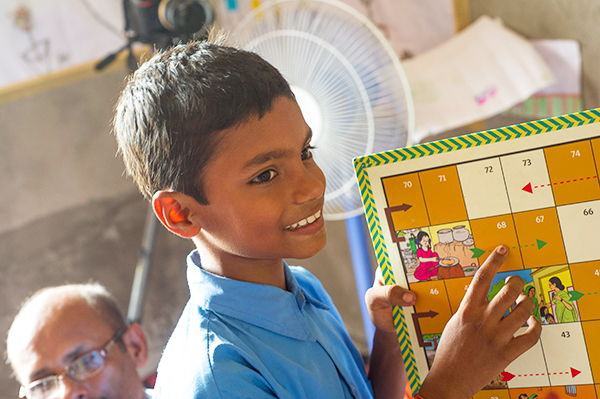
The 7-year-old boy ran up to me, holding out his wares, asking me to buy incense sticks. “Sister, 1 box for 10 rupees, or 2 for 15 rupees,” he rattled off his sales pitch.
I didn’t really need the incense sticks but I saw how eager and determined he was to make a sale, running up and down the busy streets of Bangalore, India.
I told the young boy I would buy two boxes of incense and handed him 20 rupees. Without any hesitation, the boy promptly gave me 5 rupees back in change. His speedy calculation, did not surprise me.
Children, research has shown, have an innate understanding of basic mathematics – even without the benefit of formal education and even at a very young age.
Dr. Keith Devlin, co-founder of Stanford University’s Human Sciences and Technologies Advanced Research Institute, determined that newborns at just two days old can perform basic arithmetic and can even manipulate numbers up to 3!
While basic mathematics may be inborn or intuitively learned, researches have concluded that advanced mathematical skills cannot. Formal education is required to learn advanced skills such as working with large numbers, multiplication, division and fractions.
Without a formal mathematics education, children can manipulate only small numbers. According to Dr. David. A. Sousa, an international consultant in educational neuroscience, “speed and accuracy” to perform calculations decreases as a number gets larger. For instance, we are better able to calculate the difference between 20 and 10 than we are able to calculate the difference between 90 and 80.
For children like the incense seller, who have developed informal knowledge outside of school, their math skills, while likely limited, can be reinforced and advanced through formal education.
Creative Associates International has developed education initiatives that strengthen the connections between informal knowledge developed outside the classroom and formal knowledge learned in school. Children in Creative’s program, especially from marginalized or poor environments, greatly benefit from these connections.
Many of the children in these programs work to support their families by buying and selling fruits, vegetables or other small items. Such buying and selling activities serves not only as a stepping stone for students to develop more formal concepts but also offers an environment in which they can practice and reinforce their classroom lessons.
A third grade student in Cambodia’s rural Prey Veng Province helps her parents at their shop after school, where she is able to practice addition, subtraction, multiplication, division and even fractions. That connection between formal and informal mathematics has made her quite skilled in math. In fact, she completed a mathematics assessment administered by Creative in record time, beating out all her classmates.
It is important to bridge informal and formal learning. In doing so, students not only academically succeed in mathematics, but they also make real-life connections that can keep them in interested in this math.

